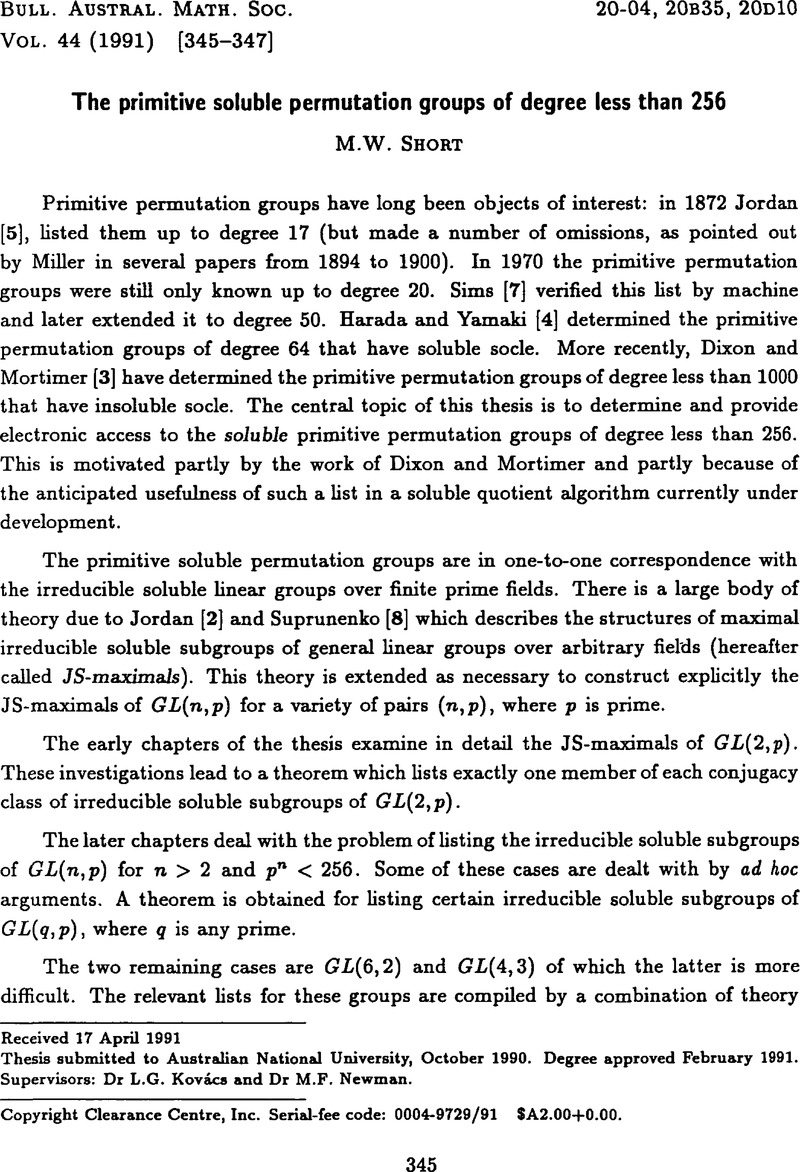No CrossRef data available.
Article contents
The primitive soluble permutation groups of degree less than 256
Published online by Cambridge University Press: 17 April 2009
Abstract
An abstract is not available for this content so a preview has been provided. As you have access to this content, a full PDF is available via the ‘Save PDF’ action button.

Information
- Type
- Abstracts of Australian PhD Thesis
- Information
- Bulletin of the Australian Mathematical Society , Volume 44 , Issue 2 , October 1991 , pp. 345 - 347
- Copyright
- Copyright © Australian Mathematical Society 1991
References
[1]Cannon, John J., ‘An introduction to the group theory language, Cayley’, in Computational Group Theory, Editor Atkinson, Michael D., pp. 145–183 (Academic Press, London, 1984).Google Scholar
[2]Dieudonné, J., ‘Notes sur les travaux de C. Jordan relatifs à la théorie des groupes finis’, in Oeuvres de Camille Jordan, tome 1, pp. XVII–XLII (Gauthier-Villars, Paris, 1961).Google Scholar
[3]Dixon, John D. and Mortimer, Brian, ‘The primitive permutation groups of degree less than 1000’, Math. Proc. Cambridge Philos. Soc. 103 (1988), 213–238.CrossRefGoogle Scholar
[4]Harada, Koichiro and Yamaki, Hiroyoshi, ‘The irreducible subgroups of GLn(2) with n ≤ 6’, C. R. Math. Rep. Acad. Sci. Canada 1 (1979), 75–78.Google Scholar
[5]Jordan, C., ‘Sur l'énumération des groupes primitifs pour les dix-sept premiers degrés’, C. R. Acad. Sci. 75 (1872), 1754–1757.Google Scholar
[6]Short, M. W., ‘A library of irreducible soluble linear groups’, in The Cayley Bulletin no. 4, Editor Cannon, John (Department of Pure Mathematics, University of Sydney) (to appear).Google Scholar
[7]Sims, Charles C., ‘Computational methods in the study of permutation groups’, in Computational Problems in Abstract Algebra, Editor Leech, John, pp. 169–183 (Pergamon Press, Oxford, 1970).Google Scholar
[8]Suprunenko, D. A., Matrix Groups, Translations of Mathematical Monographs, vol. 45 (American Mathematical Society, Providence, 1976).CrossRefGoogle Scholar

